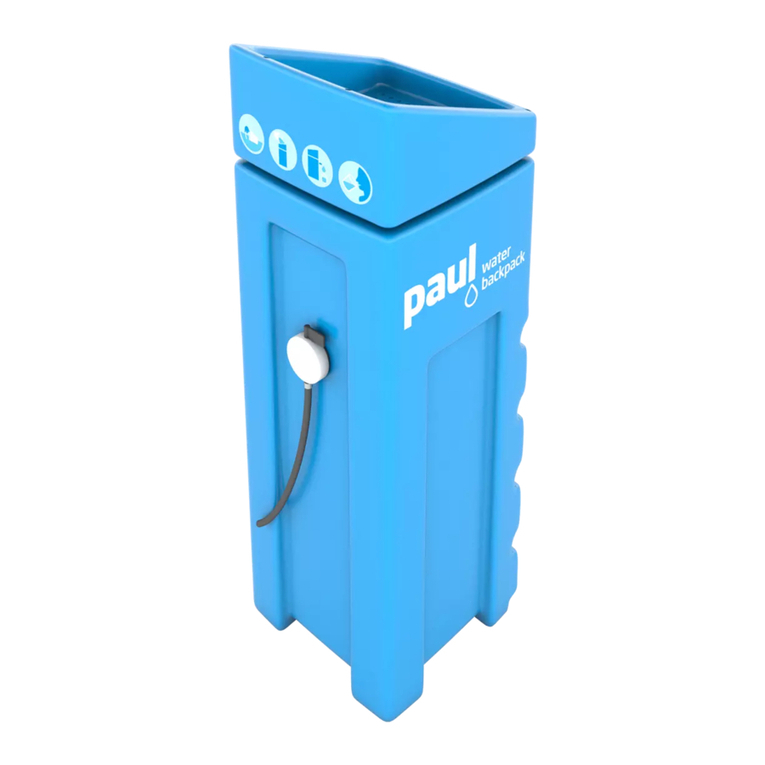
PAUL®station manual page i
PAUL Station Manual 2019-08-02 www.waterbackpack.org 02.08.2019
Content
1Principle of the PAUL®Station ....................................................1
2What can be delivered for the PAUL®Station............................3
2.1 Overview..............................................................................................3
2.2 Upgrading an existing PAUL®standard unit.....................................4
3Before the assembly.....................................................................5
3.1 Considerations on the raw water source ..........................................5
3.2 Water supply for the Raw Water Tank ............................................... 5
3.3 Overview over available accessories for the PAUL®station ........... 6
3.4 Necessary tools...................................................................................6
3.5 Scope of delivery ................................................................................ 7
3.6 Height of the tanks relative to the PAUL®unit.................................. 8
4Assembly.......................................................................................9
4.1 Set 1 to connect the Raw Water Tank with PAUL®........................... 9
4.1.1 Overview ....................................................................................9
4.1.2 Mounting the tank connector on the Raw Water Tank................9
4.1.3 Connecting the Raw Water Tank with PAUL®...........................12
4.1.4 Remarks on the OPV or OPV-S ...............................................12
4.2 Set 2 to connect PAUL®with the Filtered Water Tank....................14
4.2.1 Overview .................................................................................. 14
4.2.2 How to install............................................................................14
4.3 Set 3 outlet FWT................................................................................ 16
4.4 Set 4 side outlet with hose ............................................................... 17
4.5 Overfill Protection Switch (OPS) for the Raw Water Tank.............. 19
4.6 Run-Dry Protection Switch (RPS) .................................................... 19
5Start-up and operation ...............................................................20
5.1 OPV adjustment ................................................................................ 20
5.2 Start-up of the PAUL®station........................................................... 21
5.3 Temporary stop of operation............................................................ 22
6Maintenance................................................................................23
6.1 Daily................................................................................................... 23
6.1.1 Water level inside PAUL®.........................................................23




























